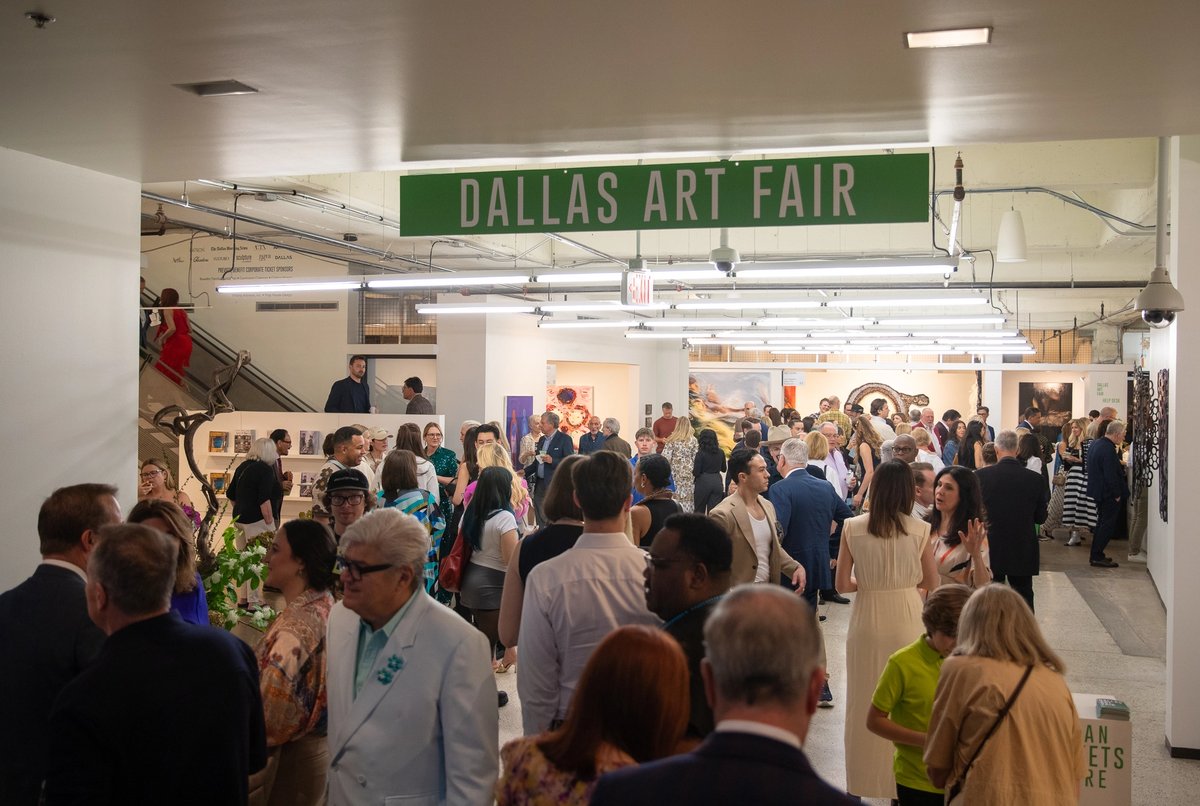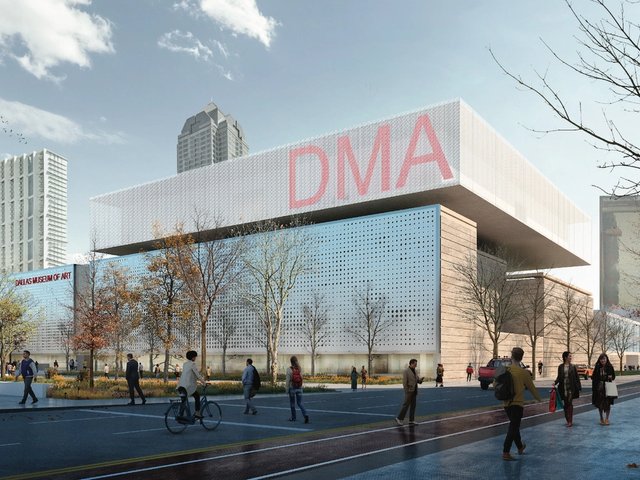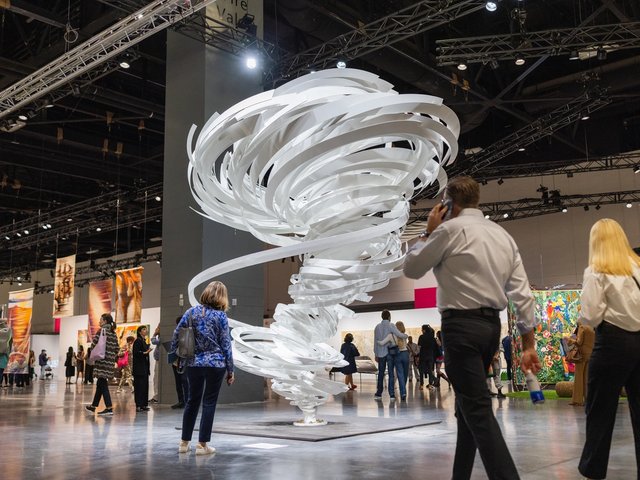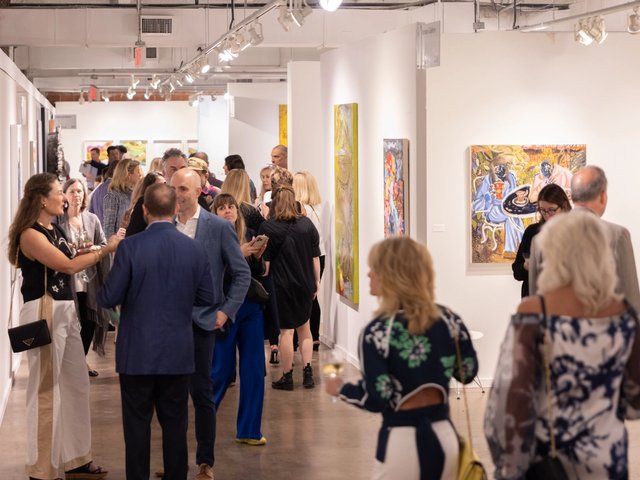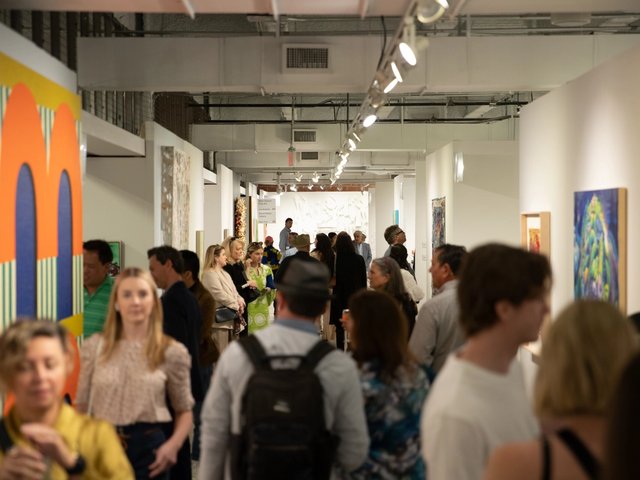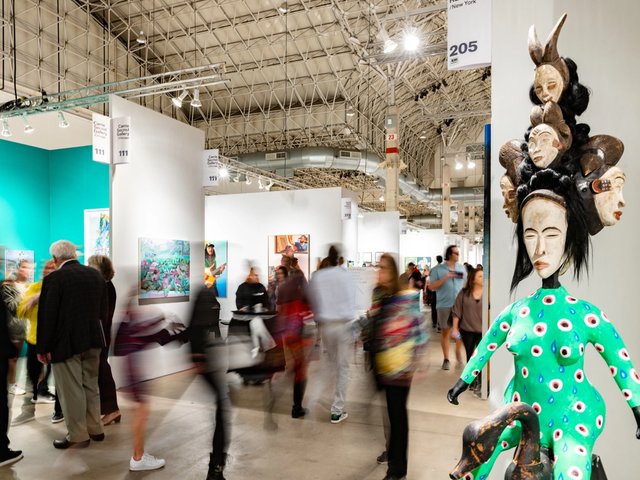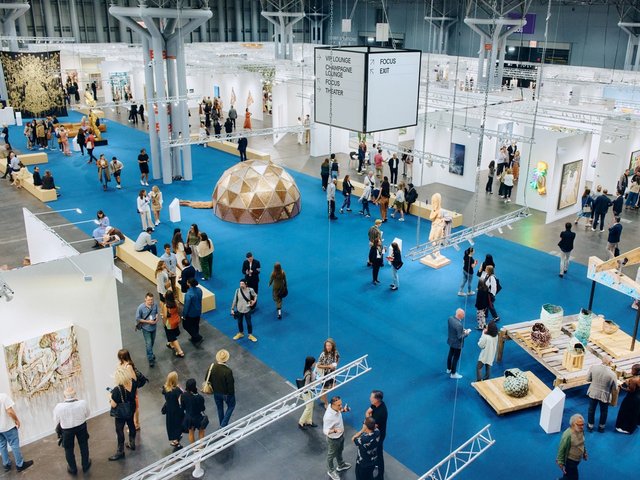The art world has its eyes on Dallas this week after US President Donald Trump announced wide-ranging tariffs on most of the country’s trading partners. The Dallas Art Fair is the first test of the art market at the dawn of this new global trade regime, setting the scene for the San Francisco Art Fair and Expo Chicago later this month, then the New York fairs and auctions in May.
“It’s really difficult to navigate. Everybody wants to do the right thing,” Kelly Cornell, the Dallas Art Fair’s director, said of the possibility of tariffs affecting sales the morning of the VIP preview on Thursday (10 April). “Dallas is not impenetrable, but it’s somewhat insular to the larger economy. People really make a point to have the fair on their calendar. Many of our collectors are buying once or twice a year, and their major buying moment is here at the fair. It’s part of their plan, and I believe they’ll stick to the plan.”
The day before the fair’s VIP preview, Trump announced a 90-day pause on his “reciprocal” tariffs, though a universal 10% tariff will be applied to all countries except China, which will be subject to a 125% tariff and has retaliated in kind. While art is largely understood to be exempt from the duties, they could add costs to shipping and other logistics, and there is no guarantee other countries will exclude art in possible retaliatory tariffs.
“There was a sigh of relief from the galleries. Now there’s really a clear understanding that art is exempt from the tariffs, and the 90-day-pause provided some clarity for everyone and a moment to breathe,” says the Dallas-based art adviser Adam Green. “I felt like the attendees were, as they are each year, really excited to have to visit their hometown fair. This type of fair does attract a lot of collectors who maybe only buy one or two works a year, and this is where they choose to do it.”
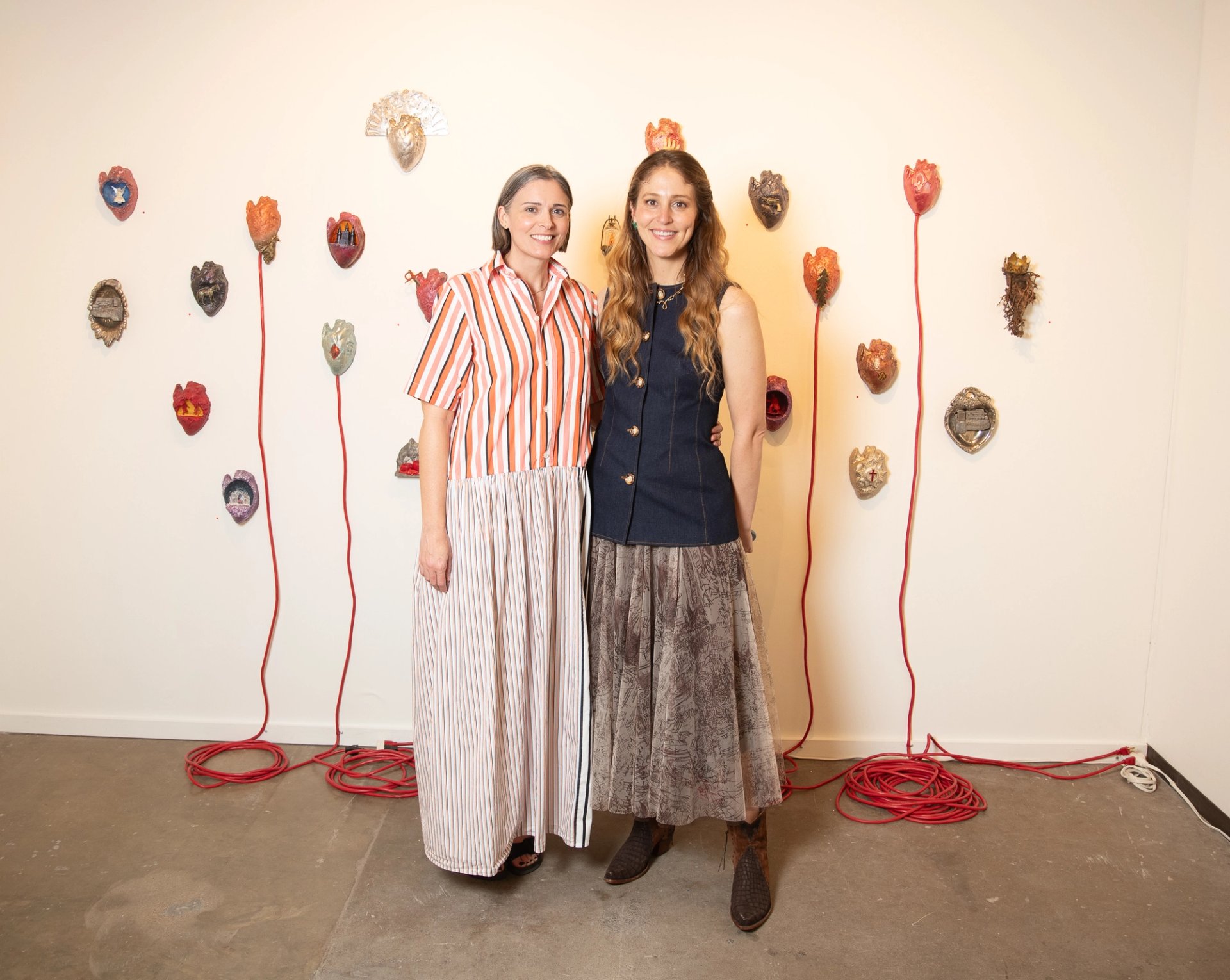
Hignite Projects founder Sarah Hignite (left) and Dallas Art Fair director Kelly Cornell (right) with Dallas-based artist Celia Eberle's work at Cris Worley Fine Art's stand. Courtesy Dallas Art Fair
That strong local support for the arts—and robust economy to match—have helped the Dallas Art Fair weather some of the country’s largest economic downtowns since the fair launched in 2009 at the height of the Great Recession. The fair is known for having a slower, more Southern pace than the fairs in New York or Miami, and it is not unusual for a collector to visit the fair several times over the course of the week and wait as late as Sunday before closing a deal on a purchase.
Some collectors still came to the preview ready to spend. Dealers reported making significant sales, especially after the champagne started flowing in the evening as part of the Dallas Art Fair Foundation Preview Benefit. Local stars at the preview included the reigning Miss Texas USA, Aarieanna Ware, complete in her gown, sash and crown. She visited with the artist Indivi Sutton at Franklin Parrasch Gallery’s stand.
The New York-based Hollis Taggart Gallery made a splashy sale early on: a Texas-based collector purchased an untitled painting from around 1975 by the German-born American abstract artist Friedel Dzubas, priced around $300,000. The canvas is massive, measuring eight feet by eight feet. “That’s why we brought it to Texas,” Taggart says. “Because we know homes down here can handle these.”
Taggart, who grew up in New Orleans, is one of many dealers at the Dallas Art Fair who says he likes Texas collectors and how engaged they are; they ask a lot of questions about the works and artists before making a purchase.
“They are very appreciative, and they spend a lot of time with it. They don't make impetuous decisions here in this environment,” Taggart says. “It’s that slower pace I prefer to the frenzy you see in Art Basel.”
During the preview, Berry Campbell Gallery from New York sold a painting by Perle Fine for $175,000 and another by Lynne Drexler for $75,000. As part of the Dallas Art Fair and the Dallas Museum of Art’s (DMA) annual acquisition programme, the museum acquired works from seven galleries for its permanent collection using this year’s grant of nearly $100,000. The works acquired by the DMA are Terrain (white) (2024) and Terrain (blue) (2024) by Alexa Kumiko Hatanaka from Patel Brown; sculptures in ceramic and wood by Eduardo Sarabia from OMR; Breathe (2022) by Eri Imamura from Turner Carroll; 150,048 Pinpricks 150,048孔 (2023) by Fu Xiaotong from Alisan Fine Arts; Belle de Jour (1974) by Sanlé Sory from Yossi Milo; and Pink Floral (Lillypad) (1990s) by Tina Girouard from Anat Ebgi.
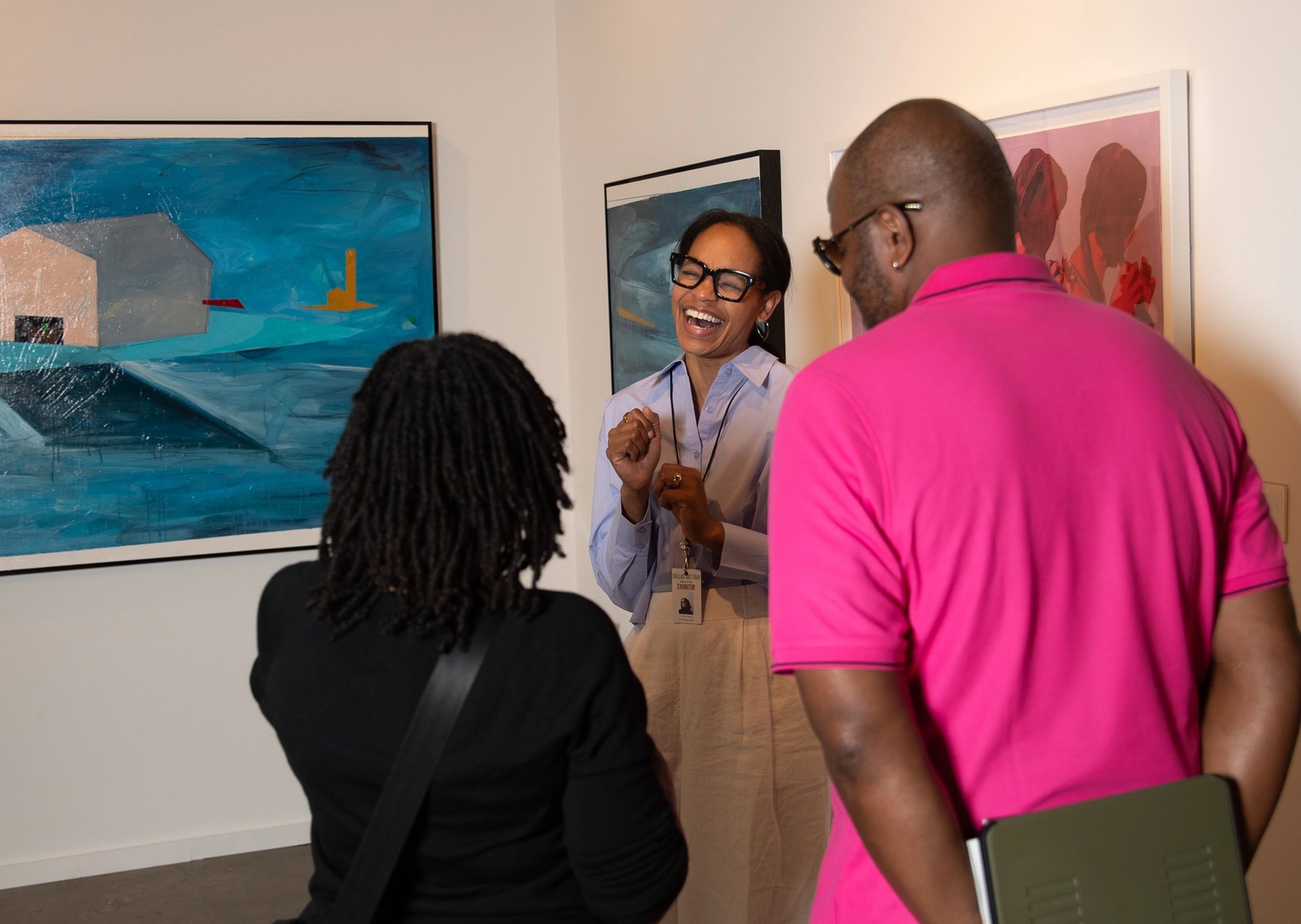
Valerie Gillespie from the Dallas-based gallery Pencil on Paper speaks to visitors at the Dallas Art Fair Courtesy the Dallas Art Fair
Cristin Tierney Gallery from New York sold two works by Ryan McGinness to private collectors; works at the stand are priced between $5,000 and $50,000. The Brooklyn-based gallery Carvalho Park reported selling all the works by Rachel Mica Weiss on its four-artist stand, including her pink marble piece Where do we go from here? (2025), which sold in the first hour of the preview for $30,000. The gallery says it sold four more works by Weiss for prices ranging from $19,000 to $25,000. It also found buyers for a work by Guillaume Linard Osorio for $24,000 and a work by Maximilian Rödel for $22,000.
The Atlanta-based Wolfgang Gallery reported selling Light Eaters (2023), a blue-pencil-on-mylar work by Zachari Logan, priced at $5,500. Andrew Reed Gallery from Miami said it sold Kate Bickmore’s The Graces Wear a Heart of Lace (2025), priced at $26,000; Dan Attoe’s Summer Night Work Break (2025), priced at $6,000; four works by Sam Creasey with asking prices between $4,500 and $6,000; and Patricia Geyerhahn’s Untitled (Small Field 2) (2025), priced at $2,200.
Galerie Christian Lethert from Cologne reported selling a four-part collage by the German artist Imi Knoebel to a European collector. The Tokyo-based gallery Koko Arts says it sold several works by the Japanese artist Ryoichi Nakamura to Dallas-based collectors. The London-based gallery LBF Contemporary sold four works by H.E Morris, priced between $13,500 and $17,000 each. Luis de Jesus Los Angeles sold three collage paintings by the Dallas-based artist Evita Tezeno to local collectors. Mrs Gallery from Queens, New York sold two works on paper by Lily Ramírez for $25,000 and $6,300 each. Osmos gallery from New York sold a work by Ivan Prerad and another by Anton Stankowsk, for prices totalling $27,000. Perrotin Gallery reported selling works by Nick Doyle, Leslie Hewitt, Young-Il Ahn, Jean-Michel Othoniel, Gabriel Rico and Nancy Graves, but did not disclose prices.
Piero Atchugarry Gallery from Miami sold a sculpture by Chris Soal for $19,800, and four smaller works by Radenko Milak for $14,400 altogether. The gallery also reported selling a work by Guillermo Garcia Cruz for $11,500, one by Radenko Malik for $41,000 and another by Emil Lukas for $40,000.
A challenging economic climate
Some dealers at the fair reported slower sales during the VIP preview than in previous years—though almost everyone noted it is important to be patient with collectors in Dallas, and that important transactions can still come through on the weekend.
“Outside of a gallery bringing a truly extraordinary kind of presentation, I think the days of sold-out or very close to sold-out booths on day one at an art fair are pretty rare,” Green says. “Based on my conversations, the level of sales varied by gallery, which is a theme that’s really persisted over the last year. I think this is still the case, especially in light of the state of the stock market and the overall fiscal and economic uncertainty.”
Wall Street instability triggered by Trump’s back-and-forth tariff mandates are added stressors to an already soft art market. Earlier this week, the release of the latest Art Market Report by Art Basel and UBS revealed that global art sales plunged by 12% last year, representing the third-largest market contraction in the past 15 years. Larger declines recorded were during the 2009 recession (-36%) and at the onset of the Covid-19 pandemic in 2020 (-22%); last year’s downturn is on par with the 12% drop recorded in 2012.
“Personally, I have had more nerves than I feel like I’ve had in the past,” says Cris Worley, who has operated her eponymous gallery in Dallas for 15 years, and has taken part in the Dallas Art Fair every year since. “But leading up to the fair we have had a lot of inquiries, and we’ve had a lot of sales that were not necessarily fair-related. So we’re going into the fair bolstered up.”
During the VIP preview, Cris Worley Fine Arts sold multiple wall sculptures shaped like anatomical hearts by the Dallas-based artist Celia Eberle.
“We feel like we’re gonna weather the storm because we’ve been weathering storms for years, and things always sort of turn back around,” Worley says. “I’m very fortunate to live in Dallas, because we have a very diverse, flush, thriving art community. I’ve been able to do what I do all in Dallas all these years because of the support network that’s here. I’m a little bit protected in that way.”
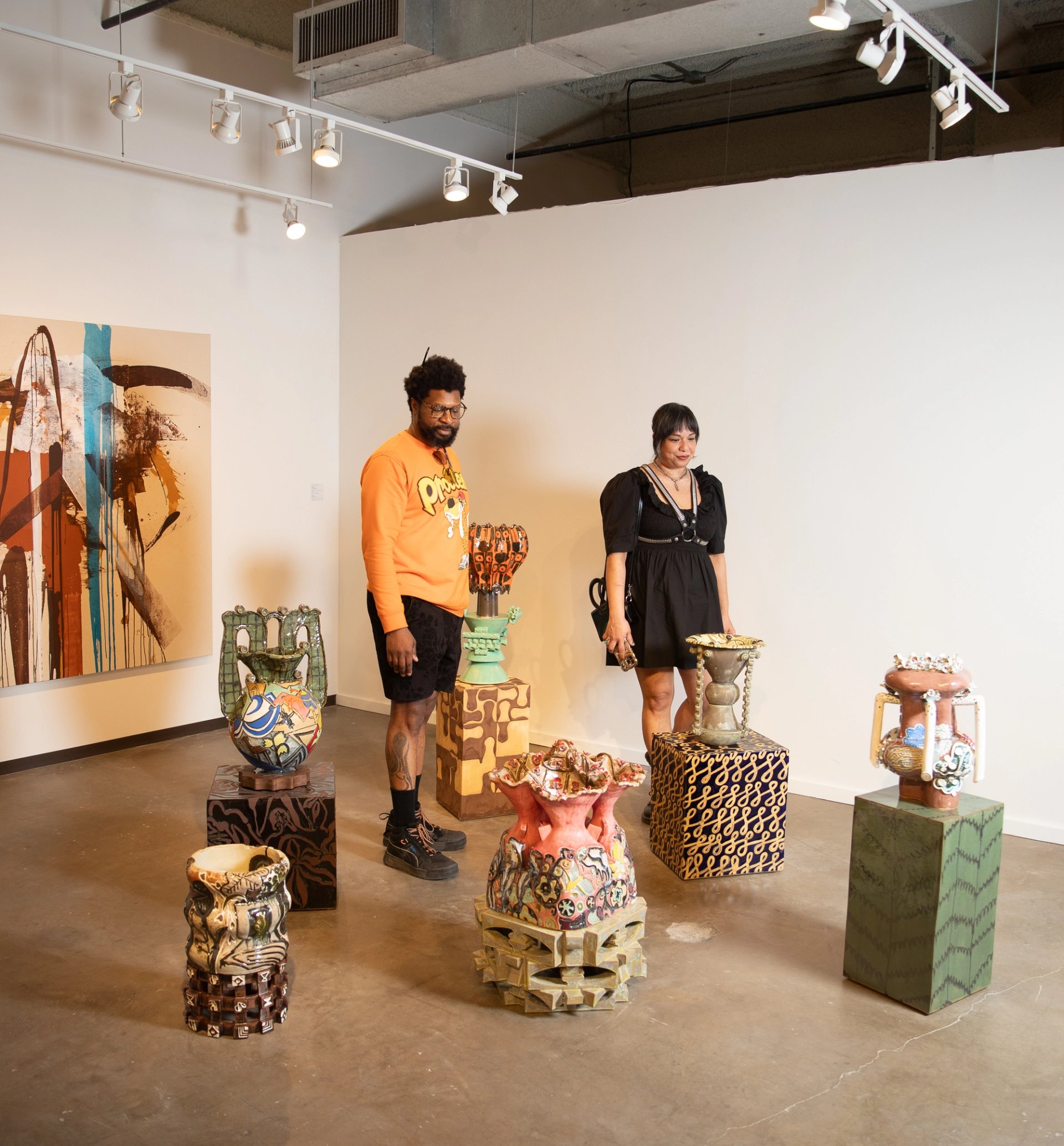
The artist Xxavier Carter and stylist Ariella Villa at Vielmetter's stand at the Dallas Art Fair Courtesy Dallas Art Fair
Even if most exhibitors at the Dallas Art Fair and Dallas Invitational have not been directly affected by tariffs—and works on view were largely shipped before the new duties would have gone into effect anyway—some dealers still worry about a chilling effect on clients, or that collectors will decide to save their money rather than spend it on art in case of economic turmoil further down the line.
Nancy Whitenack is a longtime Dallas dealer who founded Conduit Gallery in Dallas’s Deep Ellum neighborhood in 1984, making it one of the first galleries in the city dedicated to emerging contemporary art. On Thursday afternoon during the Dallas Art Fair’s preview, the gallery had not yet closed a deal. “I’m fearful that’s at play—it’s certainly on my mind,” Whitenack said when asked about tariffs and the slumping art market. “But we’re getting a lot of interest. We’ll have to see.”
In more than four decades of art dealing in Dallas, Whitenack says she has seen the city’s art scene grow “enormously”, particularly in the last ten years, thanks to Dallas’s supportive group of collectors. “We have a lot of younger collectors who are very enthusiastic,” she says, adding that “people are coming from everywhere, and that changes the tenor of everything”.
The Invitational's new high-water mark
A testament to Dallas’s growing art scene is the third iteration of the Dallas Invitational, a satellite fair hosting 17 galleries from all over the world. Founded by the Dallas gallerist James Cope, this year the Dallas Invitational has decamped from a hotel across the street from the Dallas Art Fair to the Rosewood Mansion on Turtle Creek, which locals consider a real Dallas institution. The fair’s relatively low cost in previous years has meant less pressure for exhibitors to sell, allowing them to focus on building relationships with Texan collectors.
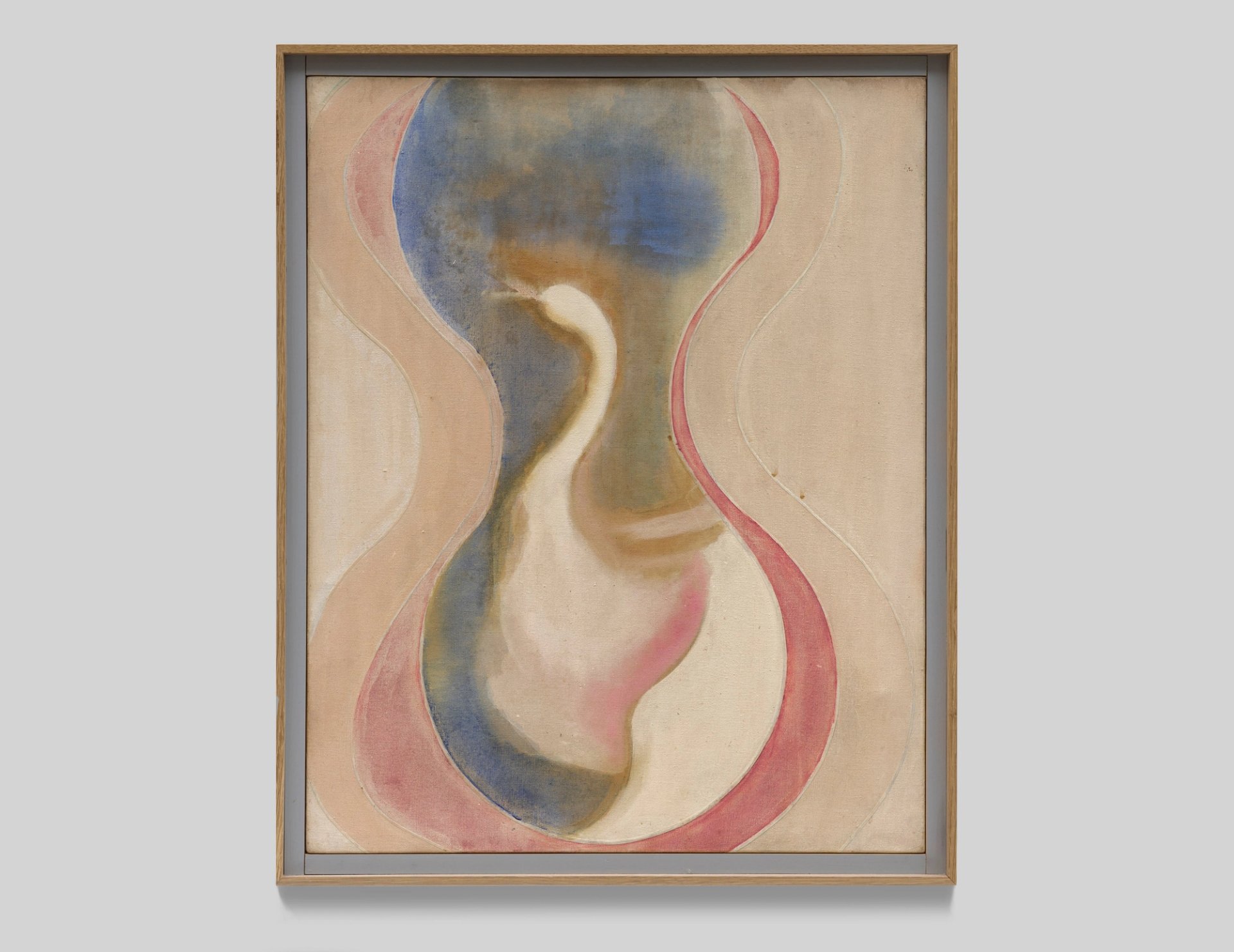
Frank Bowling's Dulan's Swan (1962) Courtesy Vardaxoglou Gallery, London
That is not to say there are no opportunities to make major sales. During the fair’s Wednesday preview, the London-based Vardaxoglou Gallery sold Dulan’s Swan (1962) by Frank Bowling to a Dallas collector for a six-figure sum, a record sale for the fair. Dulan's Swan was purchased on the spot with no pre-selling, in spite of current economic uncertainties, Vardaxoglou says. “Great paintings will sell any time,” he added.
Bringing the Bowling work to Dallas was a strategic decision, Vardaxoglou says. The city has a soft spot for Bowling: the Modern Art Museum of Fort Worth is staging a joint show (until 27 July) dedicated to the artist and Aubrey Williams, and Bowling’s Map Paintings were highlighted in a popular exhibition at the DMA in 2015.
Dallas may have once had a reputation for being all hat and no cattle in the art world, but dealers at both fairs say the city’s collectors are among their favourites to work with.
“There once were major misconceptions about Dallas, but I think the Dallas Art Fair has been a very key component to changing that dialogue,” Cornell says. “ I don’t really hear much about the TV show Dallas or cowboy hats anymore.”
- Dallas Art Fair, Fashion Industry Gallery, Dallas, until 13 April
- Dallas Invitational, Rosewood Mansion on Turtle Creek, until 12 April


